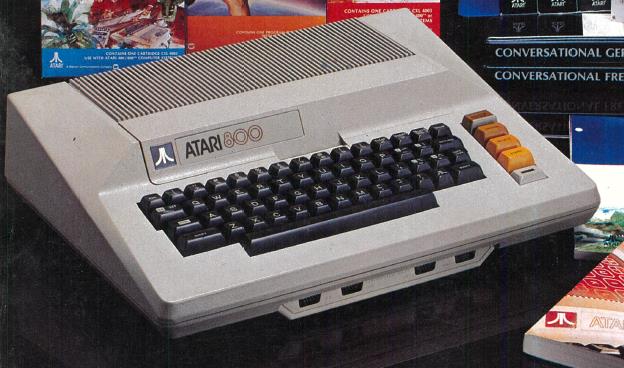
The Atari 400 and 800 were introduced in January, 1979. The less expensive model, the 400, had a membrane for a keyboard; these were the first home computers of the generation that followed the three home computers introduced in 1977. Here is an image of the Atari 800:

The large price difference between the Atari 400 and 800 was one problem with the computer system, at least in my opinion, but the keyboard of the Atari 800 had another problem for me, as a touch-typist: an extra key was present on the keyboard, the Atari shift, between the ?/ key and the right-hand shift key. This was worse than the extra key between the Z key and the left-hand shift key which was later to appear on the IBM PC.
It was in June 1979 that the Apple II+ was introduced. It had the same appearance as the Apple II, but came with different software in ROM: the original Apple II included both an integer BASIC written by Steve Wozniak and an assembler for the 6502; the Apple II+ instead only came with BASIC, but it was a full BASIC with floating-point arithmetic from Microsoft, the same Applesoft BASIC previously available as an upgrade for the Apple II.
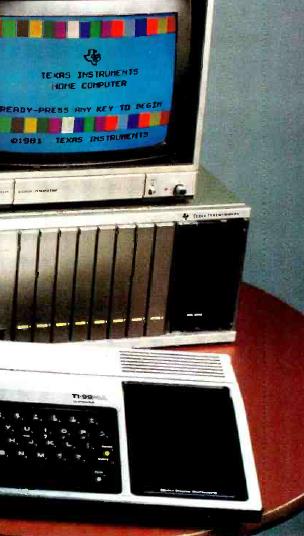
November 1979 marked the introduction of the TI 99/4 home computer. An image of the slightly revised later model, the TI 99/4A, is shown at left.
It was based on the TMS 9900 microprocessor, introduced in 1975, a 16-bit microprocessor originally in a 64-pin ceramic package. It was used to make the TI 990/4 computer, which replaced the TI 980 minicomputer made by Texas Instruments. The image below
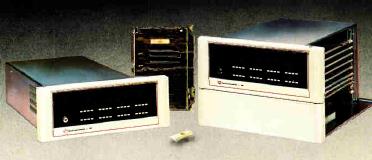
shows the TI 990/4 on the left, and the TI 990/10 on the right; the TI 990/10, although compatible with the TI 990/4, did not use the 9900 chip, but instead was implemented in LSI for higher performance, so it was a minicomputer rather than a microcomputer.
Also in 1979, Texas Instruments made available a single-board development kit for educational use, the TI 990/189, shown in this image:
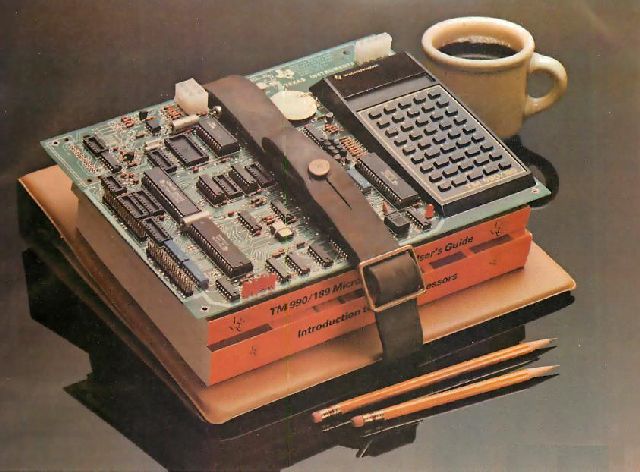
The 9900 was one of the earliest 16-bit microprocessors, if not the earliest. It achieved this by reducing the required number of transistors, and thus the die size, by using memory to store its registers. One on-chip register, the Workspace Pointer, pointed to the area in memory containing the 16 registers; this allowed rapid context switching, even if it meant the processor was otherwise slower. Also, its design made no provision for addressing more than 64 kilobytes of RAM, so in this respect it was similar to an 8-bit processor.
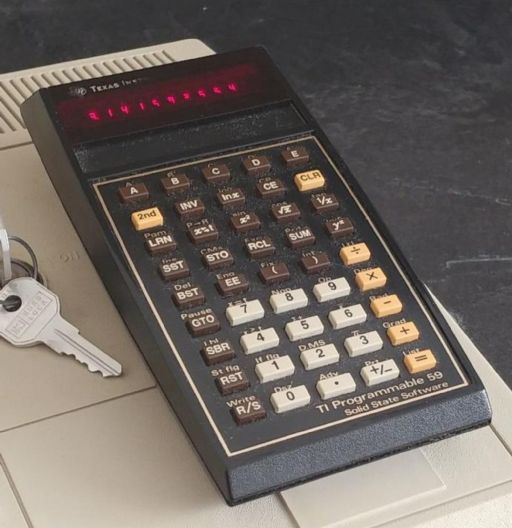
The keypad provided on the 990/189 board, while it used plain buttons, and a different faceplate, was molded from the same tooling as used to make the front half of the case of the TI 59 and TI 58 programmable calculators, as can be seen by comparing the unit to the photo of a TI 59 on the right.
Although the 9900, therefore, might not have been quite as powerful as the Motorola 68000, it still worked on 16-bit numbers and was therefore faster and more powerful than an 8-bit chip would normally be. This should have made the TI 99/4 a very important and exciting computer.
That, however, was not the case; instead, it compared unfavorably even with most of the competing 8-bit processors.
There were three basic flaws which beset the TI-99/4:
The latter flaw, not directly visible to the user, may have been due to the various support chips available being designed for 8-bit microprocessors, rather than the intent of not competing with the 990/4. Of course, they had chips with which to build the 990/4, but had the 99/4 been built that way, it would have been much more expensive, and not a home computer any more.
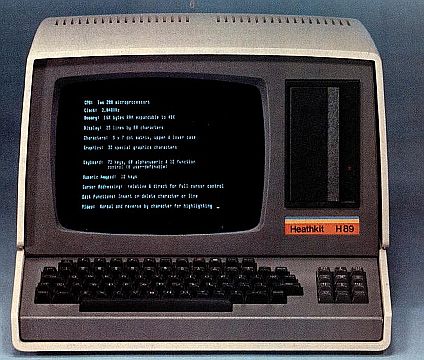
In the late summer of 1979, Heathkit introduced their new H89 computer, pictured at right, available in kit form. This was a Z-80 based system, and it included a second Z-80 processor to handle some peripheral control functions. It ran the CP/M operating system. Heathkit would be acquired by Zenith within months, and Zenith continued to sell the computer, but only in assembled form, as the Zenith 89.
While there were many computer systems where the computer, the monitor, and the keyboard were all contained in a single unit, the H89 looked like a relatively compact computer terminal, which was not a common form factor for such computers.
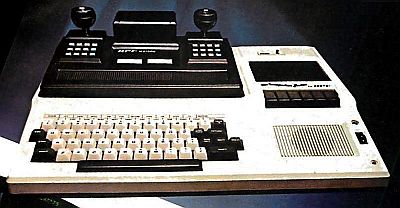
In late 1979, another low-cost alternative became available to home computer users, the APF Imagination Machine, pictured at left. It had a standard ASCII upper-case keyboard, but its most notable feature was that it consisted of a video game console with the keyboard and cassette tape drive belonging to the docking station for the video game console that converted it to a full computer that could be programmed in BASIC.
Unfortunately, it was not particularly successful on the market, and, thus, those who had purchased it would have had a limited choice of programs for it available.
The fact that it had a standard ASCII keyboard was an improvement over many of the arrangements provided with 8-bit home computers, although the restriction to upper case was unfortunate. It used the Motorola 6800 as its CPU, which I find attractive for ease of programming. And it was available considerably earlier than the Commodore 64, or even the VIC-20, and so I found it unfortunate that it had not been a success, as it seemed to have gotten more things right than many of its predecessors.
SHARP introduced the MZ-80C, pictured below, in Japan in October 1979; it was also available in Europe, and indeed it was likely also available in North America. This computer used the Zilog Z-80 as its processor.
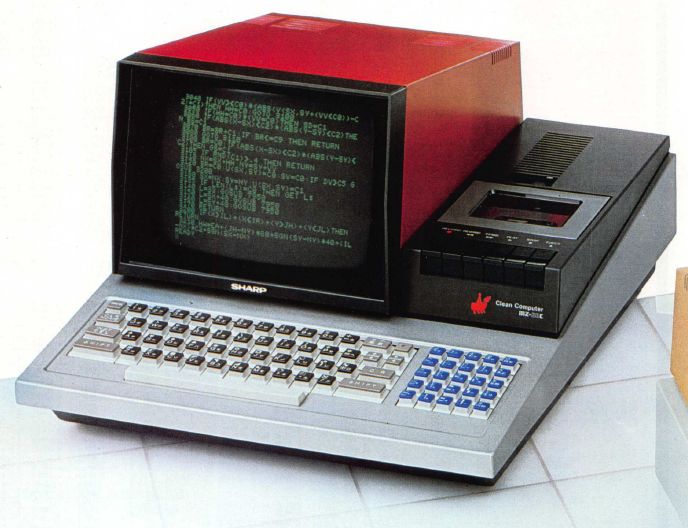
Other computers in this series, such as the original MZ-80 and the later MZ-80A from 1972, also had this unique form factor of a unit containing a CRT and a tape drive along with a keyboard. Generally, a built-in screen added too much to the cost of a home computer, compared to using an RF modulator to connect it to a TV set, to be a popular configuration, although the TRS-80 succeeded despite such a design.
The MZ-80, at least, definitely was available in North America; however, its keyboard was, like that of the original Commodore PET, laid out in a square grid pattern.
The Sinclair ZX-80 was announced on January 29, 1980; it was a major stride forwards in making a computer of some sort widely affordable; its successor, the Sinclair ZX-81 from March 1981 was considerably more widely available in the form of the Timex-Sinclair 1000, and also considerably more successful. This displayed text and graphics on a TV set, but only in black and white, and the keyboard was a small membrane surface with blister bumps, so compromises were made to attain its very low price. It is illustrated below:
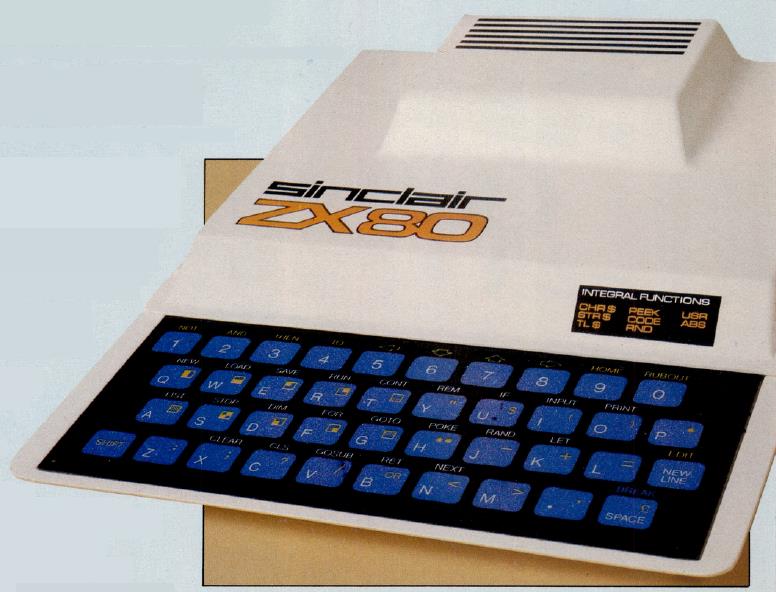
Its low price made it possible for just about anyone in the Western industrialized countries to own a computer if they chose. The only graphics it had were achieved through the use of the block graphics characters that are printed on the keys, and, as noted, its video output was black and white, but it could still be programmed in BASIC to solve problems.
As the membrane keyboard was not convenient for touch-typing, the design made up for that by providing the keywords of the BASIC language, printed in white above the keys, to reduce the number of keystrokes needed for programming.
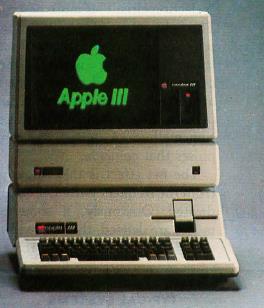
May 19, 1980 was the date on which Apple initially announced the Apple III, pictured at right. Sometimes, the Apple II was called the Apple ][ because that was how its name appeared on the case; the Apple III, similarly, could be called the Apple /// for the same reason. Unfortunately, the system had problems as initially designed, and had to be recalled, and re-released ith a corrected design on November 9, 1981. As this was after the introduction of the IBM PC, which sported a 16 bit processor at a lower price, I would blame that, rather than, as the Wikipedia article on this machine does, damage to Apple's reputation from the débâcle, as the reason.
The Apple III had a lower-case keyboard, but it also had an Apple II compatibility mode in which only upper-case could be typed; I thought this was unnecessary at the time, and later Apple proved me right by coming out with the Apple //e.
While its processor was still the 6502, it did have bank-switching circuitry, and it came with 256k of RAM; as this was more than the 128k the IBM PC included in its basic configuration, this was used as a selling point.